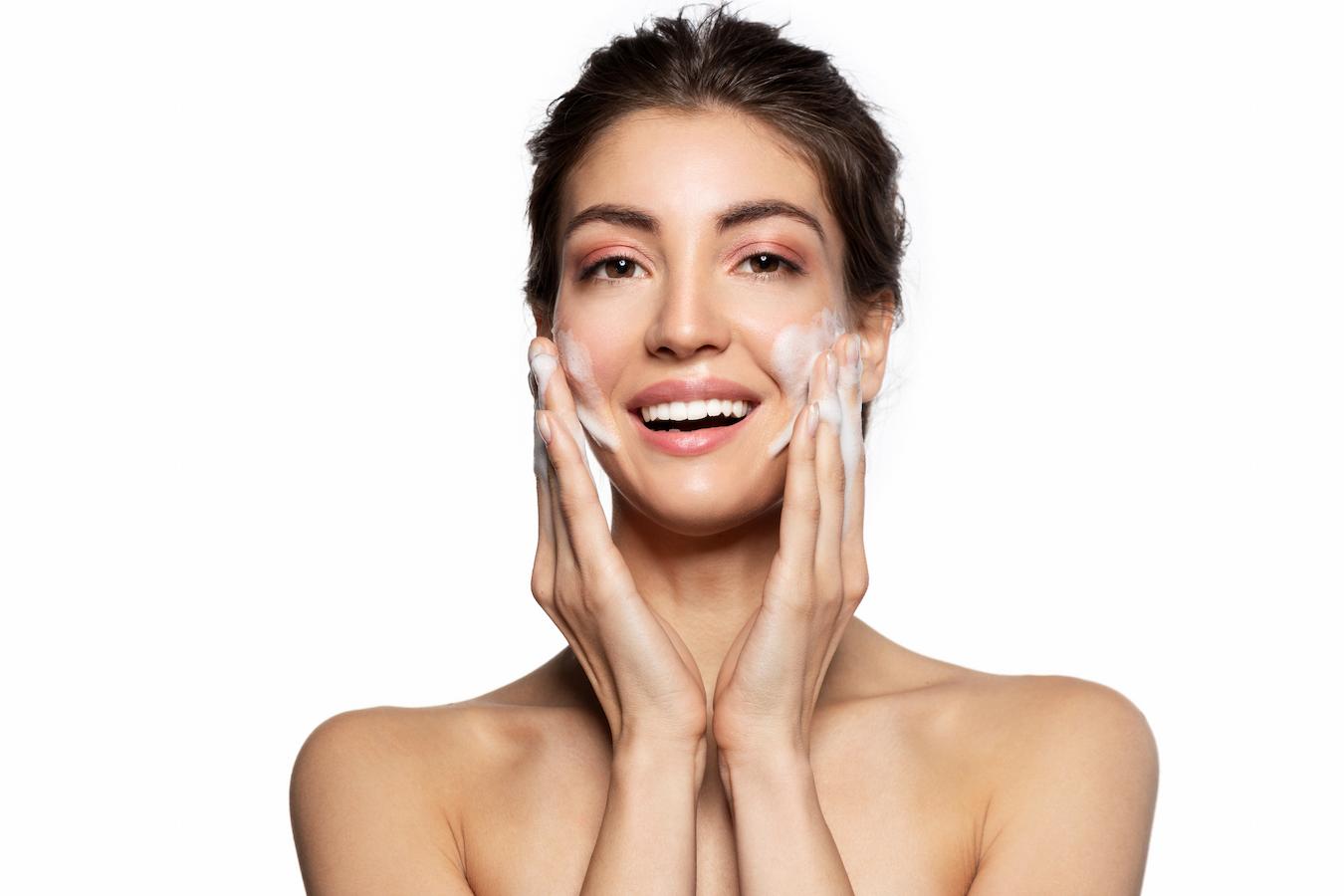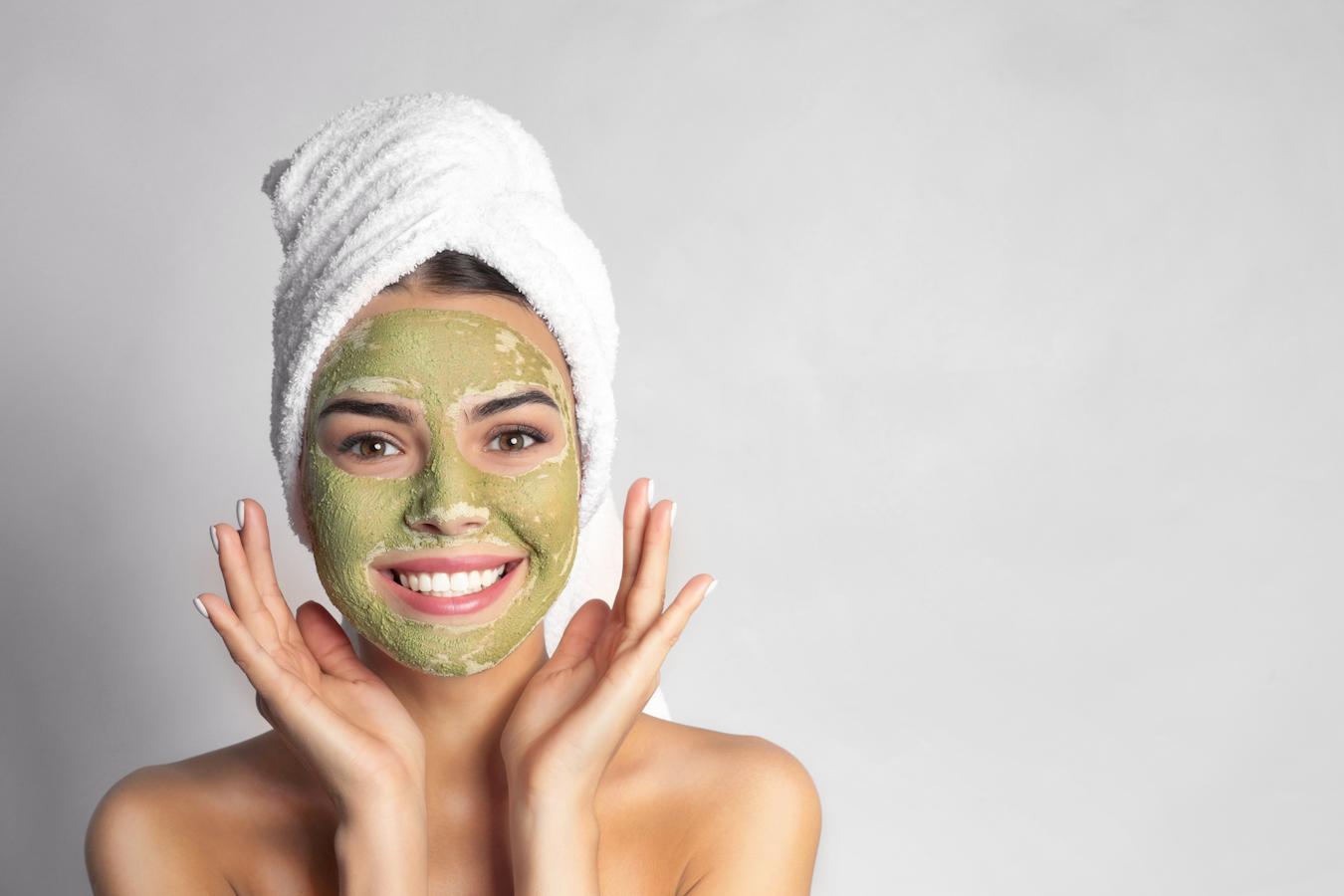How Do Chemical Exfoliants Work?
By now, you’ve probably decided to add exfoliation into the mix of your skin care routine. But how exactly does chemical exfoliation work over physical exfoliation?
Below, you’ll find all the answers to chemical exfoliation and how it differs from physical exfoliation. With so many different chemical exfoliants out there, it can be hard to keep track.

But we’re here to help you understand exactly how chemical exfoliation works. So you can be your own skincare expert – and not just a skincare junkie.
See Related: What Are Chemical Exfoliants?
Alpha hydroxy acids (AHAs)
Alpha hydroxy acids, otherwise known as AHAs, are water soluble acids that can improve anything from skin texture to skin tone to sun damage. Some AHAs are produced synthetically whereas others are derived from fruit sugars or milk.
At their core, all alpha hydroxy acids work at sloughing off dead skin cells while smoothing out skin surface and unblocking clogged pores. They do this by breaking down the sugars in the skin which loosens the bonds between dead skin cells, causing them to slough off.
Below are the most common types of AHAs you’ll see in skincare products like AHA serums, AHA face creams, and more.
Glycolic acid
Glycolic acid exfoliators are some of the most common types of chemical exfoliants in the skincare world. This type of chemical exfoliation is perfect for those who want to unclog pores and even minimize their appearance.
All chemical exfoliators shed dead skin cells off the skin’s surface to promote skin cell turnover. So whether you use glycolic acid in a chemical peel, a serum, or even a face wash, you can say goodbye to enlarged pores and hello to fresh, new skin.
Lactic acid
Lactic acid is gentler than other chemical exfoliators, making it perfect for those looking to keep their skin hydrated. As an alpha hydroxy acid, lactic acid is derived from milk and works wonders on uneven texture due to hyperpigmentation.

Unlike physical exfoliators, chemical exfoliation tends to be gentler on the skin. This is because physical exfoliants require manual labor to get deep into blocked pores whereas chemical exfoliation does the work all on its own.
Citric acid
Citric acid not only does some amazing work at shedding dead skin cells. But it’s also the perfect chemical exfoliant for brightening up a dull complexion.
As the name suggests, citric acid is made from citrus fruits. And plenty of chemical peels have put this ingredient to good use to help cleansed skin feel refreshed and look more vibrant.
Mandelic acid
Mandelic acid is a common chemical exfoliator used in toners and serums. Derived from bitter almonds, it’s a gentler chemical exfoliant than most and may help to reduce acne, fine lines, and wrinkles.
But just because it’s gentle doesn’t mean it doesn’t give dead skin cells the boot. In fact, this acid is most commonly used in chemical exfoliation products for users looking to treat acne.
Malic acid
Malic acid is another powerful chemical exfoliation ingredient that sheds the outer layer of dead skin cells while promoting an improved skin texture. It’s a common ingredient found in face washes, serums, and face masks alike.
This acid might be one of the lesser known AHAs. But dead cells are no match for this powerful ingredient.
Beta hydroxy acids (BHAs)
Beta hydroxy acids are similar to AHAs. But they go an extra step further by working at the inside of the pore to remove excess oil and dirt.

Salicylic acid
Salicylic acid is by far the most common type of beta hydroxy acid. As a BHA exfoliant, salicylic acid gets deeper than any chemical or physical exfoliators can, unclogging pores and shirking off dirt and debris.
It’s the perfect option for those looking for a deep cleanse without having to resort to physical exfoliation products. Plus, it has a UV protective effect on skin so it acts as your own chemical sunscreen! (Though you should still wear sunscreen as well.)
Bonus: Which Ingredients Can Be Used To Treat Dry Or Dehydrated Skin?
The best chemical exfoliants according to your skin type
By now, you must be wondering how different skin reacts to each of these chemical exfoliants. Below, you’ll find our quick guide to matching the right chemical exfoliants with their ideal skin types.
Acne-prone skin
Acne prone skin needs a lot of cleansing and clearing out. That’s why many dermatologists recommend BHAs, particularly salicylic acid, when it comes to finding a safe and effective choice for treating acne.

Because BHAs target acne under the surface of the skin, they’re able to help control oil and shine better than AHAs. As always though, be sure to perform a patch test before using any chemical exfoliant on your skin.
Oily skin
Oily skin will similarly benefit from BHAs since these chemicals will deeply penetrate the pores the get rid of sebum. But be careful as over exfoliation may cause dry patches.
Always follow up with a water based moisturizer in your skin care routine. Even though your skin is oily, it still needs to be hydrated!
Sensitive skin
When it comes to sensitive skin, you’ll want to be especially careful with any type of exfoliation. Lactic and mandelic acids are considered the gentler chemical exfoliants of the bunch.
So consider either of these exfoliants a welcome addition to your sensitive skin care regimen.
Combination skin
While mixing acids typically isn’t recommended, you just might have to with combination skin. BHAs are great for clearing up pores but you’ll also want to follow up with an anti-inflammatory exfoliant as well.

Even consider looking into poly hydroxy acids to see if such chemical exfoliants meet the needs of your combination complexion.
Dry skin
Typically, dry skin isn’t in need of an exfoliant. But if you’re going to exfoliate, consider using lactic or tartaric acids for a gentle yet effective option.
These exfoliants won’t dry out your skin any more than it already is. And, as always, follow up with a hydrating ingredient like hyaluronic acid to make sure your skin stays refreshed and moisturized.
Say hello to fresh skin with these chemical exfoliators!
Chemical exfoliation is a great way to treat your skin without going to a salon every couple of days. With these tips, we hope you’ll be able to find the right exfoliating agent for your skin type.
And maybe even see a brighter and more even complexion than ever before!
Keep Reading: What Is The Best Under Eye Concealer For Mature Skin?
—
For over 60 years, Viviane Woodard has represented “The Purity of Skincare”. We are the leading beauty brand for skin care products and promote the importance of good skin hydration. Follow us on Facebook, Instagram, Twitter, and Pinterest for skin care tips, product discounts, and more.
